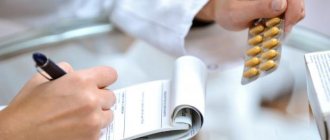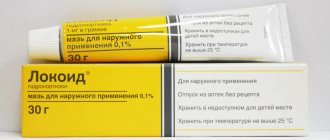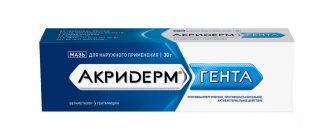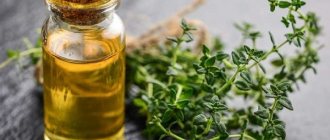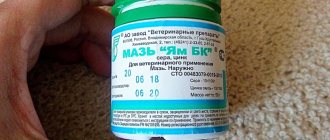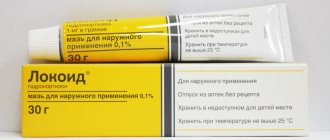From this article you will learn:
- what is isotretinoin,
- Acnecutane and Roaccutane - instructions, reviews,
- differences between these drugs.
Isotretinoin is a retinoid that is also known as 13-cis-retinoic acid (Figure 1). This chemical compound is an isomer of tretinoin (trans-retinoic acid), which, like isotretinoin, is a structural analogue of vitamin A. Isotretinoin is best known as an oral systemic retinoid that is used to treat severe forms of acne. The latter include, for example, nodular and conglobate forms of acne, as well as forms of acne that are resistant even to oral antibiotics.
Systemic retinoids containing isotretinoin include drugs such as Acnecutane and Roaccutane. As we said above, they are intended for oral administration (available in capsule form). However, there are preparations with isotretinoin for external use that can be used to treat photoaging of facial skin. These drugs include those available on the Russian market - Retasol drugs, as well as retinoic ointment.
Isotretinoin (13-cis-retinoic acid) –
Reviews from dermatologists about Acnecutane and Roaccutane are the most positive, because in fact, these drugs with isotretinoin have made a real revolution in the treatment of severe forms of acne. They have improved the quality of life for many patients, including preventing the formation of scars. Isotretinoin therapy provides complete remission of the disease in almost all patients with acne, and after completion of the course of therapy, remission can last up to several months or even years.
However, therapy with systemic retinoids is associated with the risk of quite severe side effects, which we will discuss in detail below (they occur especially often if the dosage is incorrectly selected). Girls and women should take into account that these drugs have a pronounced teratogenic effect, and therefore they are prohibited both during pregnancy and breastfeeding. In addition, the entire period of use of the drug will require a two-level contraceptive system (both oral contraceptives and condoms).
How much do Roaccutane and Acnecutane cost in pharmacies -
For 2022, the price for Roaccutane will be from 1900 rubles - for a package of 30 capsules of 10 mg. It should be noted that this drug can now not be purchased in every pharmacy, which is apparently due to the current re-registration of the drug on the Russian market. For Acnekutan, the price for a package of 30 capsules of 8 mg will be from 1650 rubles, and for a package of 30 capsules of 16 mg - from 2600 rubles.
Analogs of Roaccutane include such drugs as Sotret (India) and Verocutan (Russia). The first one costs from 1350 rubles per pack of 30 capsules of 10 mg. As for the Russian drug Verokutan, it has currently disappeared from sale.
Roaccutane and Acnecutane (mechanism of action) –
The drug Roaccutane is produced by a pharmaceutical company (Switzerland), and the drug Acnecutane is produced by a pharmaceutical company (Croatia). The drugs contain isotretinoin and are practically equivalent to each other, however, in the production of the drug Acnekutan, the “Lidose” technology is used, which makes it possible to reduce the daily and course doses of isotretinoin, and therefore the risk of side effects during treatment. Lidose technology is a Belgian development.
Indications for use –
- severe forms of acne (nodular, conglobate, fulminant),
- forms of acne with a risk of scarring,
- acne that cannot be treated with topical medications or oral antibiotics.
These are the indications you can find in the official instructions for the drugs Roaccutane and Acnecutane.
However, according to numerous clinical studies and the most authoritative textbook on dermatology in the world, Fitzpatrick's Dermatology (we use the 8th edition), isotretinoin preparations are also very effective for the treatment of gram-negative folliculitis and facial pyoderma. Gram-negative folliculitis is exactly the complication that very often develops in patients with acne after using local and systemic antibacterial drugs. The mechanism of action of isotretinoin for acne -
The mechanism of action of isotretinoin has not been fully studied, but it is known that it quite strongly suppresses the activity of the sebaceous glands. It suppresses both the activity of sebocytes (these are cells in the sebaceous glands that secrete fatty secretions) and their proliferation, i.e. reproduction. Accordingly, as a result of a course of isotretinoin, both the secretion of sebum (secretion of the sebaceous glands) decreases and the sebaceous glands decrease in size.
Studies have shown that after completing the course of treatment with isotretinoin, in most patients the usual activity of the sebaceous glands returns only after 2-4 months, however, in some patients this effect can be expressed even up to 1 year. In addition, isotretinoin helps indirectly reduce the number of P. acnes bacteria, normalizes the processes of follicular keratinization, and also has anti-inflammatory activity.
The latter, however, requires clarification, because at the first stage of drug therapy with Acnecutane or Roaccutane - on the contrary, acne may worsen. This effect usually lasts up to 2 weeks and its appearance does not require discontinuation of the drug, and to reduce the symptoms of acne exacerbation, reduced dosages of isotretinoin are usually used at the first stage of treatment.
Isotretinoin: before and after photos
Important: Keep in mind that it usually takes at least 4 weeks to notice the first positive changes. In addition, during the first 1-2 weeks, your acne may worsen (this is normal with systemic use of isotretinoin). The full course of treatment will last from 16 to 24 weeks.
The use of roaccutane for the treatment of acne in cosmetology
Korchevaya T.A.
Acne is a disease of the hair follicles and sebaceous glands. In the pathogenesis of acne, four interrelated factors are important: pathological follicular hyperkeratosis, excessive secretion of the sebaceous glands, proliferation of Propionibactertum acnes (P. acnes) and inflammation. In addition, the nature and volume of secretion of the sebaceous glands is influenced by androgens, which can also play an important role in the pathogenesis of acne.
Excess sebum production plays an additional role in the pathogenesis of acne. In patients suffering from acne, sebum production increases significantly, which usually correlates with the severity of the disease. The secretion of the sebaceous glands is a substrate for the proliferation of P. acnes. In this case, lipolysis of sebum occurs by bacterial lipases to free fatty acids, which in turn contribute to inflammation and the formation of comedones.
In patients with acne, P. acnes multiplies and plays a key role in the inflammatory phase of the disease. When the contents of the follicle enter the skin itself, aseptic inflammation occurs. Depending on the location and extent of inflammation, papules, pustules and cysts are formed.
In connection with the above, for rational treatment of acne, it is important for us to solve the following main tasks:
- reduce the effect of androgens on the sebaceous glands,
- reduce sebum formation,
- reduce inflammation,
- reduce the number of P. acnes,
- normalize the mitotic activity of the skin.
Rational treatment is based on correct clinical assessment. The duration of acne, the maximum severity and location of the lesion should be determined.
Topical treatment alone may be indicated for mild to moderate noninflammatory acne, mild superficial inflammatory acne without scarring, and as an adjunct to oral therapy for moderate to severe acne.
Systemic therapy is necessarily combined with local therapy and is indicated for the treatment of patients with moderate to severe acne, especially in cases of scarring or a tendency to psychosocial disorders.
Currently, Roaccutane is the most effective drug for the treatment of severe forms of acne. Clinical experience shows that it can cause long-term remissions or cures in most patients. Roaccutane reduces sebum production by 80%. There is a significant reduction in comedogenesis and P. acnes counts within 4 to 8 weeks after initiation of treatment.
Roaccutane is teratogenic. When prescribing it to women of childbearing age, it is necessary to exclude pregnancy two weeks before treatment. But the drug does not stay in the tissues for a long time and therefore, 1-2 months after treatment with Roaccutane, pregnancy is not prohibited. The opinion of some gynecologists and a number of other specialists who do not recommend getting pregnant for the entire first year after treatment with Roaccutane is erroneous: the level of the drug in the blood returns to the physiological norm within two weeks after discontinuation of the drug. And for men, in terms of childbearing, it has no contraindications, since it has no effect on sperm.
Economic efficiency. The cost of a course of treatment with Roaccutane is not always clearly perceived not only by the patient, but even by the doctor. But we must remember the high effectiveness of the drug, its surprisingly lasting effect on severe cystic, atheromatous acne, which, unfortunately, has always been considered a chronic recurrent skin disease. And here the doctor is faced with a choice: either he offers the patient treatment for a long time followed by numerous cosmetic procedures to prevent relapse; carry out repeated courses of treatment in case of relapse of inflammation, which, especially in cystic forms, is almost inevitable. With this tactic for treating acne, the total costs of treatment extended over time without the use of Roaccutane will undoubtedly be higher. Doctors are attracted to treatment with Roaccutane, of course, by the result itself: “I receive deep satisfaction from the results of treatment with this drug, as the patient’s skin improves and evens out almost without much effort on the part of the doctor.” Indeed, often even with the most complex cosmetic procedures we cannot achieve the same cosmetic effect on the skin that Roaccutane treatment provides. And most importantly, clinical cure is observed in the vast majority of patients. We understand that investing money in a temporary effect such as we often see from antibiotics for acne would, of course, be inappropriate. Therefore, the patient asks about guarantees. According to various authors, the percentage of effectiveness is very high: from 80% to 95%.
We have noticed that treating foci of chronic infection increases the effectiveness of treatment and reduces the percentage of relapses.
We begin to prepare the patient for taking Roaccutane already at the stage of a standard examination for the drug:
1. Sanitation of foci of chronic infection (gastrointestinal tract, ENT organs, etc.), 2. Sanitation of the skin with concomitant demodicosis: - Delex-acne gel (contains sulfur), - Metrogyl jelly (contains metronidazole).
We believe that it is not always advisable to carry out monotherapy with Roaccutane. To improve skin smoothing, enhance the anti-inflammatory effect, accelerate healing, eliminate post-acne defects in the early stages, when they are more susceptible to influence, we recommend combining Roaccutane at different stages of treatment with a number of medications and cosmetic procedures:
- vitamin E (taken orally in a prophylactic dosage),
- homeopathy and antihomotoxicology,
- Skinoren,
- oxygen ozone therapy,
- mesotherapy,
- myostimulation,
- enzymatic peeling (to remove possible peeling of facial skin),
- diathermocoagulation of abscesses,
- massotherapy.
Among antihomotoxic drugs, I would like to especially highlight the use of Traumeel in complex therapy with Roaccutane.
The use of Traumeel S and Roaccutane in the treatment of severe forms of acne (240 patients)
| Roaccutane | Roaccutane and Traumeel S | |
| Stopping new items from appearing | 5-8 weeks | After 2-4 weeks |
| Duration of treatment | 12-16 weeks | After 10-12 weeks |
| Anti-scarring effect | Moderate | Expressed |
The table shows that when Roaccutane is combined with the antihomotoxic drug Traumeel, the effect of treatment occurs much earlier and the smoothing of scars is more pronounced.
Unfortunately, Roaccutane does not combine well with liquid nitrogen, cosmetic cleansing, dermabrasion, chemical and acid peels. After completion of treatment with this drug for different periods of 3 months. up to 6 months if necessary, chemical and acid peeling and dermabrasion can be performed. Cosmetic cleansing - earlier: after 1-2 weeks, and with small dosages - at the end of the Roaccutane course.
Conclusion.
Roaccutane acts on the most important mechanism of acne - increased sebum secretion. Gradually, the sebaceous glands decrease in size, sebaceous cysts disappear, and therefore, inflammation in the area of these glands decreases. It is with the restructuring of the sebaceous glands that a lasting effect or clinical recovery is associated with treatment with Roaccutane.
It is possible to combine Roaccutane at different stages of treatment with anti-scarring and anti-inflammatory homeopathy, as well as with a number of cosmetic procedures.
Acnecutane and Roaccutane: instructions for use
The drug Acnekutan is available in capsules (there are 2 forms of release - capsules of 8 and 16 mg). The drug Roaccutane also has 2 release forms - capsules 10 or 20 mg. A very important issue is determining the optimal daily dose in each specific clinical case. Never take these medications without the advice of a dermatologist and laboratory tests. According to the dermatology textbook Fitzpatrick's Dermatology, the recommended daily dose of isotretinoin is in the range of 0.5-1.0 mg/kg/day.
For Acnecutane, the average daily dosage will be slightly lower (than for Roaccutane), which is explained by the use of Lidose technology in its production. By the way, reviews of dermatologists on Acnecutan note that, apparently due to this circumstance, side effects are less likely to occur. At the 1st stage of therapy, it is customary to use slightly lower doses of isotretinoin than during the main period of treatment. For example, for Acnecutane the daily dose will usually be only 0.4 mg/kg/day at the 1st stage of therapy, and in the future we can increase it to 0.8 mg/kg/day. And for Roaccutane at stage 1, the daily dose will already be 0.5 mg/kg/day, and then it will need to be increased to approximately 1.0 mg/kg/day.
In addition to the standard daily dose recommended above in the range of 0.5-1.0 mg/kg/day, studies have described treatment regimens that use even lower daily doses (in the range of 0.1 to 0.4 mg/kg/day). day). It should be noted that such daily doses also show their effectiveness, but you must understand that in these cases the duration of remission after discontinuation of the drug will be shorter.
1) Recommended cumulative doses –
There is also the concept of a cumulative dose, which during the entire course of therapy can be: 1) for Acnecutane - 100-120 mg/per 1 kg of weight, 2) for Roaccutane - 120-150 mg/per 1 kg. Calculation of the cumulative dose per 1 kg of weight is very important for patients whose daily dosages change or there are breaks in treatment. In these cases, achieving the recommended cumulative dose per 1 kg of weight allows for the longest remission of the disease. In patients with severe lesions of the back and chest, the recommended daily dose can reach up to 2 mg/kg/day, because these areas are less sensitive to isotretinoin therapy.
2) Duration of treatment –
Complete remission of acne symptoms can be achieved after 16 to 24 weeks of taking isotretinoin. In each specific case, the duration of the course is individual and can only be determined by a dermatologist. Please note that an improvement in the condition of your acne may be observed, including within 1-2 months after stopping the drug. Therefore, the drug can be discontinued in some cases even before the inflammatory elements of acne completely disappear.
Approximately 10% of patients treated with isotretinoin require a second course of the drug, with the likelihood of repeat therapy increasing in patients younger than 16–17 years. A second course of therapy can be prescribed no earlier than 8 weeks (after the end of the first).
Important: in patients with severe forms of acne (especially granulomatous lesions), isotretinoin therapy often leads to a sharp exacerbation of acne. And in such patients, it is important not only to use lower dosages at the 1st stage of treatment, but also to conduct a short course of treatment with prednisolone (for 1-2 weeks, 40-60 mg/day). But if necessary, the course of prednisolone can be extended, and can cover the first 2 weeks of isotretinoin therapy (24stoma.ru).
→ Roaccutane instructions for use official. (PDF) → Acnecutane official instructions (PDF)
EXPERIENCE OF USING ROACCUTENE IN MODERATE FORMS OF ACNE
Eremenko A.A.
KB No. 1 FGU YuOMTS FMBA of Russia
INTRODUCTION. Acne vulgaris is one of the most common skin diseases encountered at an outpatient appointment with a dermatologist. To define the most severe, common, chronic, difficult-to-treat forms of acne, the term “acne disease” is used. As is known, acne has a complex pathogenesis, the leading links of which are genetically determined hyperandrogenemia, or increased sensitivity of the receptors of the hair follicles and sebaceous glands to a normal or reduced amount of androgens in the body.
Follicular hyperkeratosis - hypertrophy of the sebaceous glands, their increased functioning - is one of the important investigative causes of the effects of sex hormones. As a result of increased keratinization inside the follicle, impaired desquamation, against the background of increased secretion of the sebaceous glands, anaerobic conditions are created that are optimal for reproduction, activation of microflora, with subsequent inflammation of the sebaceous gland. Thus, the normal microflora present in comedones (Propionbacterium acnes, Staphylococus epidermidis, etc.) becomes pathogenic. Inflammatory acne forms. Currently, the most effective in the treatment of moderate and severe forms of acne is Roaccutane, a synthetic retinoid of systemic action that has a complex mechanism that can cause a specific response as a result of binding and activation of retinoic acid receptors in cell nuclei. The general biological properties of retinoids are diverse and include the ability to suppress the proliferation of epidermal cells and sebaceous glands, promote normal cell differentiation, have an immunomodulatory effect, and restore photodamage to the skin.
The mechanism of action of retinoids in acne is to inhibit the processes of keratinization, reduce sebum secretion, as well as reduce the activity of P. acnes and the local inflammatory response, thus affecting all parts of the pathogenesis of the disease. In recent years, the indications for its use have expanded. There is information available for prescribing isotretinoin for less severe forms of acne.
- Indications for its systemic (oral) administration for moderate severity of acne are: lack of effect or dissatisfaction with the use of traditional systemic antibiotic therapy;
- relapse of the disease;
- scar formation, seborrhea;
- psychological problems;
appointment at the insistence of the patient, having received consent to the intervention. PURPOSE OF THE STUDY. To study the effectiveness of using a systemic retinoid (Roaccutane) in patients with moderate forms of acne, side effects.
METHODS. Over the past 3 years, 18 patients with moderate severity of acne aged from 18 to 34 years have been under my supervision. Traditional treatment methods, including systemic antibiotic therapy, have not been successful.
The treatment regimen for patients included isotretinoin at an initial dose of 0.5 mg/kg per day, increased to 1.0 mg/kg over two weeks to achieve a cumulative dose of 120–130 mg/kg. On average, the course of treatment lasted 4 months. Taking into account the complications that arise when using Roaccutane, 60% of patients were prescribed a dose of 0.5 mg/kg per day until a cumulative dose of at least 120 mg/kg was achieved. At the same time, the duration of treatment increased, but the effectiveness did not deteriorate.
In parallel, local treatment was carried out with cleansing lotions (Clearasil, Exfoliak), creams, ointments (Skinoren, Zinerit Klenzit, etc.)
On the eve of and during treatment, liver function was monitored monthly (liver tests, AST, ALT, bilirubin, cholesterol, lipid metabolism indicators).
RESULTS. After a month of treatment, all patients showed significant improvement. The secretion of sebum decreased, the formation of new comedones and inflammatory elements stopped. By the end of treatment, the skin pathological process was almost completely resolved in 85% of patients. Normal was the exfoliation of skin flakes. Only secondary pigmentation remains. In 15% of patients, taking into account the severity and extent, isolated infiltrates and single conglobate elements remained.
When using isotretinoin, complications from the skin and mucous membranes were observed in the form of dryness, peeling, and cheilitis in 70% of patients, which were easily corrected by reducing the dose of Roaccutane and using emollients and moisturizers. Some patients experienced mild redness of the facial skin in the form of dermatitis. Due to the thinning of the facial skin when using Roaccutane, increased sensitivity to sunlight is possible. As for adverse metabolic events, repeated studies of liver function tests and indicators of lipid metabolism, hyperlipidemia and hypercholesterolemia showed that they were not observed during therapy with Roac cutan.
CONCLUSION. Isotretinoin, prescribed orally for moderate acne, gives amazing results in the case of unsuccessful traditional, systemic antibiotic treatment. Side effects that occur on the skin and mucous membranes are easily eliminated by adjusting the dose of the drug, provided that the patient receives a cumulative dose of at least 120–130 mg/kg over the treatment period.
‹ External therapy for trophic skin lesionsUp Experience of using systemic terbinafine in the treatment of onychomycosis in workers of a mining and chemical plant ›
Side effects of isotretinoin -
The severity of side effects always depends on the daily dose of isotretinoin. Most of the side effects will be similar to chronic hypervitaminosis syndrome “A” and, accordingly, they will be associated with the skin and mucous membranes. Below you can see statistics on the most common side effects associated with the skin and mucous membranes.
Frequency of side effects (per number of patients) –
- cheilitis (inflammation of the lips) – in 100% of patients,
- facial dermatitis – 46.1%,
- dry nasal mucosa – 24.8%,
- dry skin – 21.4%,
- skin itching – 14.5%,
- increased cholesterol levels – 9.3%,
- dermatitis of the hands – 6.0%,
- dry conjunctiva of the eye – 3.4%,
- bleeding of the nasal mucosa – 2.6%.
This study of side effects was published in the scientific journal “Bulletin of Dermatology and Venereology 2017”. The study was conducted at the Federal State Budgetary Educational Institution of Higher Education "KSMU" of the Ministry of Health of Russia. Considering that Acnecutane was used as a drug with isotretinoin, which is taken in slightly lower doses (compared to Roaccutane), then the statistics of side effects for Roaccutane should therefore be somewhat worse.
Less common side effects –
- hair thinning,
- myalgia (muscle pain),
- from the eyes - xerophthalmia, night blindness, conjunctivitis, keratitis (corneal clouding) and optic neuritis,
- hearing loss (both transient and permanent),
- severe headaches, lethargy, fatigue,
- risk of depression, suicide, psychosis and aggressive behavior,
- from the gastrointestinal tract - nausea, esophagitis, gastritis, colitis, acute pancreatitis, acute hepatitis,
- an increase in cholesterol levels with a decrease in high-density lipoprotein levels - in the first 4 weeks from the start of therapy,
- impaired bone mineralization (with a repeated course of therapy, osteoporosis may be diagnosed and the risk of fractures increases).
Isotretinoin and pregnancy -
All drugs containing isotretinoin have a strong teratogenic effect. Patients should use 2 reliable methods of contraception at once (both oral contraceptives and condoms). Contraception should be started at least 1 month in advance and continued for at least 1 month after completion of isotretinoin therapy. The patient must have a negative pregnancy test result within 11 days before starting the drug, plus regular monthly testing throughout the course. If the drug is taken by a man, then there is no risk to the fetus.
The use of isotretinoin for the correction of wrinkles –
But the retinoid isotretinoin can be used not only systemically (orally).
There are a small number of drugs with isotretinoin for external use, which were initially used exclusively for the treatment of acne and pimples, but later these drugs began to be used to correct the symptoms of photoaging. As in the case of the retinoid tretinoin, preparations with isotretinoin also help to increase skin elasticity and reduce the depth of wrinkles. What effects do external forms of isotretinoin cause in the skin:
- Peeling effect - the thickness of the superficial stratum corneum of the epidermis decreases (due to exfoliation of dead skin cells). This evens out skin tone and texture, leaving skin looking more youthful and radiant—like you've had a few superficial chemical peels.
- Increasing the thickness of the deep layers of the epidermis - isotretinoin affects stem keratinocytes located at the basement membrane, increasing the rate of their division and differentiation. This leads to an increase in the thickness of the deep layers of the epidermis, consisting of living keratinocytes. As a result, the hydrophobicity of the epidermis increases, which contributes to less evaporation of moisture from the surface of the skin. In addition, it prevents skin photoaging.
- Stimulation of the production of collagen and hyaluronic acid - isotretinoin affects not only the epidermis, but also the dermis. It promotes the proliferation (reproduction) of fibroblasts, and also significantly stimulates their activity, which leads to an increase in their production of collagen, elastin and endogenous hyaluronic acid. This leads to an increase in the thickness of the dermis, a decrease in the depth of wrinkles, and an increase in skin elasticity. It is known that thicker skin is less susceptible to the aging process.
Optimal concentrations of external forms of Isotretinoin –
There are a number of clinical studies where scientists have determined the optimal concentration of isotretinoin for the treatment of photoaging.
1) “Armstrong RB, Lesiewicz J, Harvey G et al. Clinical panel assessment of photodamaged skin treated with isotretinoin using photographs. Arch Dermatol 1992; 128:352–6.” 2) “Sendagorta E, Lesiewicz J, Armstrong RB. Topical isotretinoin for photodamaged skin. J Am Acad Dermatol 1992; 27:S15–18.”
In these studies, the concentration of Isotretinoin was increased from 0.05% at the beginning of the study to 0.1% at the end of the study. Despite the increase in concentration, the drug was well tolerated by patients without causing significant skin irritation. As a result of the treatment of photoaging skin with 0.1% Isotretinoin, the skin condition gradually improved throughout the 36-week treatment, and a decrease in the depth of wrinkles and fine lines was achieved.
3) The study “Maddin S, Lauharanta J, Agache P et al. Isotretinoin improves the appearance of photodamaged skin: results of a 36-week, multicenter, double-blind, placebo-controlled trial. J Am Acad Dermatol 2000; 42:56–63.” In this study, a combination of 0.05% Isotretinoin plus SPF sunscreen was used to treat photoaging. The result was that the condition of skin with visible photodamage was significantly improved, which was recorded using profilometry.
Conclusions: if you are interested in preventing skin photoaging, it is best to use a 0.05% concentration in combination with sunscreen. If you want to achieve an increase in skin elasticity and a decrease in the depth of wrinkles, then the main treatment should be carried out using a 0.1% concentration (it is better to use a 0.05% concentration for the first month so that the skin gets used to retinoids).
Isotretinoin has a delayed effect - it will take at least 8-12 weeks before you notice any positive changes, although the first positive effect associated with improved skin tone and texture will be noticeable after 4-6 weeks. It must be admitted that abroad isotretinoin is used for the correction of photoaging much less frequently than other types of retinoids - tretinoin or pure retinol.
Preparations with isotretinoin for external use –
- “Retinoic ointment” (Fig. 8) – is available with an isotretinoin concentration of 0.05% or 0.1%. The cost will be from 300 rubles for a 15 g tube. About a tenth of the volume is ethyl alcohol, so you should not use this drug if you have dry and/or sensitive skin. In principle, the manufacturer writes in this regard that this drug is intended for the treatment of acne in patients with oily skin.
- "Retasol" (Fig. 9) - is a solution for external use, with an isotretinoin concentration of 0.025%. But keep in mind that this drug also contains alcohol, but in less quantity than retinoic ointment. In addition, the drug contains propylene glycol, which may cause irritation in patients with sensitive skin. Cost from 400 rubles per 50 ml bottle.
Isotretinoin: instructions for use
These instructions for using the drug are equally suitable for the treatment of acne and for facial skin rejuvenation techniques, for which information will be given below.
1) Wash your face thoroughly with a mild cleanser. 2) It is advisable to wait 20-30 minutes for the skin to dry thoroughly. 3) Squeeze out a pea-sized amount of the preparation and rub evenly. 4) Avoid contact of the drug with the mucous membranes of the eyes, lips, and nose. 5) After applying the drug, wash your hands thoroughly. 6) Use Isotretinoin 1 time per day (before bed). 7) Be patient - you will see the first results after 4 weeks when treating acne, and after 8-12 weeks for skin rejuvenation. The average treatment duration is 16-24 weeks for acne, and up to 36 weeks for improving the appearance and firmness of the skin.
The average treatment duration is 16-24 weeks for acne, and up to 36 weeks for improving the appearance and firmness of the skin.
Features of application –
Do not use more of the drug than recommended or more often than prescribed, because This will not speed up the effect, but will cause more redness, peeling and itching. In addition, isotretinoin should not be used if the skin in the area of application is damaged. During the treatment period, it is necessary to avoid exposure to sunlight, especially during periods of high solar activity (otherwise you may get hyperpigmentation of the treated skin areas).
Always apply sunscreen with SPF 50 before going outside. In summer, wear wide-brimmed hats to shield your face from the sun.
Side effects of topical forms of isotretinoin -
It should be noted that isotretinoin may affect different people differently. In most patients they are completely absent or mild. The most common side effects are redness, dryness, flaking, itching and burning of the skin, and increased sensitivity to sunlight. You can see the side effects from the use of retinoids in Fig. 10-11.
We hope that our article: Acnecutane and Roaccutane reviews was useful to you!
Sources:
1. Textbook of dermatology “Fitzpatrick's Dermatology” (8th edition), 2. American Academy of Dermatology (USA), 3. “Isotretinoin in the treatment of acne” (Tlish M., Shavilova M.), 4. “Cosmetic dermatology” (Bauman L.).
Roaccutane
Roaccutane (isotretinoin) is one of the most effective drugs for the treatment of acne and other skin diseases accompanied by hyperplasia of the sebaceous glands (rosacea, etc.). Belongs to the group of synthetic retinoids. It stops the hyperproliferation of the excretory ducts of the sebaceous glands, promotes the unhindered secretion of sebum, its production decreases, and accordingly, the inflammatory reaction of the skin decreases.
A distinctive feature from other drugs is the ability to suppress the secretion of sebum, eliminate hyperkeratosis, and also suppress the activity of the bacterium P. Acnes. Only a doctor who has experience with this drug should prescribe treatment with Roaccutane. Each individual patient is prescribed an individual dose depending on the form and severity of the disease, as well as the condition of the skin. During the course of therapy, the doctor may adjust this dose by decreasing or increasing it.
Effect
A positive result after treatment with Roaccutane occurs within several months. Already in the first month, you can observe a decrease in the signs of seborrhea and the release of sebaceous ducts. Inflammation on the face and body disappears almost completely after 3-4 months, and by the end of 5-6 months the patient recovers. As a rule, one course is enough. In 90% of cases, after treatment with Roaccutane, acne relapses do not occur. However, if necessary, it is possible to conduct a repeat course.
Side effects
Dermatological reactions such as:
- dry mucous membranes,
- itching,
- skin rash,
- cheilitis.
In some cases, photophobia, conjunctivitis, and hearing loss are likely.
Contraindications and precautions
Contraindications include pregnancy, breastfeeding, individual intolerance to isotretinoin (the main active ingredient), taking tetracycline antibiotics during the period of intended treatment. Avoid taking Roaccutane orally if you have existing liver and kidney damage, pancreatitis, or hypervitaminosis. Use with caution for various chronic intoxications.
If the disease worsens during therapy, as a rule, taking Roaccutane is canceled for several days and then resumed again. The doctor should warn women about the peculiarities of treatment with Roaccutane. Since the drug has teratogenic properties (disruption of the process of embryogenesis), women of childbearing age should discuss all possible risks before taking the drug. The possibility of pregnancy during the treatment period, as well as for a year after it, should be completely excluded.
